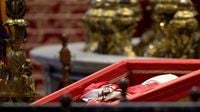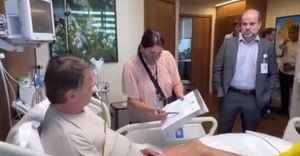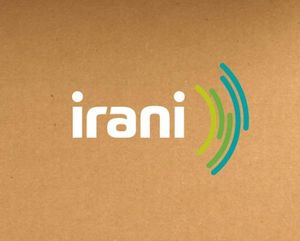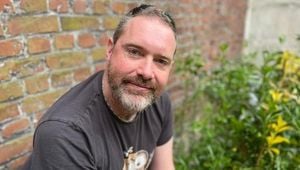On April 23, 2025, a massive security operation was initiated in preparation for the funeral of Pope Francis, which is set to take place in St. Peter's Square. With more than 200,000 attendees expected, including a significant representation of international leaders, Italian and Vatican authorities have deployed over 4,000 police officers across Rome and established a no-fly zone to ensure safety during the event.
The security detail includes approximately 2,000 carabinieri, along with agents from the State Police, the Finance Guard, and local Rome police. As the funeral date approaches, security measures are being intensified, especially with delegations from about 170 countries arriving. Among the notable attendees will be U.S. President Donald Trump, French Prime Minister Emmanuel Macron, UK Prime Minister Keir Starmer, Prince William of the UK, Spanish President Pedro Sánchez, and the King and Queen of Spain.
On Saturday, April 26, 2025, St. Peter's Square will be completely secured, featuring metal detectors, aerial surveillance, drones, and advanced detection systems. The area will be under strict military supervision, which includes snipers, canine units, and explosive detection teams. Additionally, river patrols on the Tiber River and increased fire department operations are planned to ensure comprehensive security.
Security will also be heightened at embassies and diplomatic residences, particularly at the residence of the U.S. Ambassador, where Trump is expected to stay. The airports of Fiumicino and Ciampino will operate under a special air traffic scheme, and surveillance will be increased at train and subway stations. Underground prevention teams will patrol stations and tunnels to maintain safety.
The Ministry of the Interior has prepared specific infrastructure to accommodate the 170 expected delegations, as confirmed by Matteo Piantedosi, the Interior Minister. Italian police have also activated real-time monitoring technology for St. Peter's Square and its surroundings, utilizing a 3D visualization system for detailed oversight of movements in the area.
Pope Francis, the first Latin American pope, is currently lying in an open coffin in the world's largest church, where he was visited by around 20,000 people on April 23, the first day of public tributes. His body will remain on display until Saturday, when the funeral will begin. The Italian Civil Protection Agency estimates that hundreds of thousands of people will arrive in Rome to pay their respects, prompting the extensive security measures.
During the first day of the wake, mourners had to wait in lines for up to four hours to view the open wooden coffin, which is lined in red. Each visitor was allowed only a few seconds to pay their respects. Federico Rueda, a 46-year-old Argentine, expressed his feelings, saying, "It is worth missing other places to say goodbye to an Argentine: a very dignified Pope." Meanwhile, Leobardo Guevara, a 24-year-old from Mexico, described feeling a "sense of peace" in front of the body of the first Latin American pope.
Following the funeral, Pope Francis's coffin will be taken to his favorite church, the papal basilica of Santa María la Mayor in Rome, where he will be buried with a simple inscription: "Franciscus." Italian Prime Minister Giorgia Meloni paid tribute to Pope Francis in a special joint session of parliament in Rome before personally presenting her respects at St. Peter's. She characterized the pontiff as a warm and determined person, stating, "With him, you could talk about everything. You could open up and tell your story without filters or fear of being judged."
The funeral is expected to cost just over three million euros, with an additional 800,000 euros allocated for security, significantly less than previous papal funerals. In contrast, the funeral of Pope John Paul II in 2005 and the subsequent conclave for Pope Benedict XVI amounted to seven million euros.
As preparations continue, the eyes of the world will soon turn to the election of Pope Francis's successor. Cardinals from around the globe are returning to Rome for the conclave, which is expected to begin no less than 15 and no more than 20 days after the pope's death. Only those under 80 years old are eligible to participate in the voting process. The cardinals have already met twice to discuss the future of the Church, with the next meeting scheduled for April 24, 2025.
At the time of his death, Pope Francis was on medical rest for two months but continued to make public appearances despite serious breathing difficulties. He passed away on April 21, 2025, after suffering a stroke, falling into a coma, and experiencing heart failure, according to his death certificate.
The transfer of Pope Francis's coffin from the Vatican to the Basilica of Santa María la Mayor for burial will be a public event, allowing citizens to pay their last respects during the procession. Rome's Prefect Lamberto Giannini confirmed that the route will be made public to accommodate the expected large turnout, emphasizing the importance of maintaining order while enabling public mourning.
In a departure from traditional papal funerals, Pope Francis requested a modest burial, specifically asking to be interred in a simple tomb with the inscription "Franciscus." This wish reflects his lifelong commitment to humility and service, values he embodied throughout his papacy. His burial site will be in the Basilica of Santa María la Mayor, a place he visited frequently during his time as pope.
As the world mourns the passing of Pope Francis, the funeral and the subsequent conclave to elect his successor represent a pivotal moment in the history of the Catholic Church. The legacy of Pope Francis, marked by his dedication to the marginalized and his calls for peace, will continue to resonate as the Church navigates its future.




